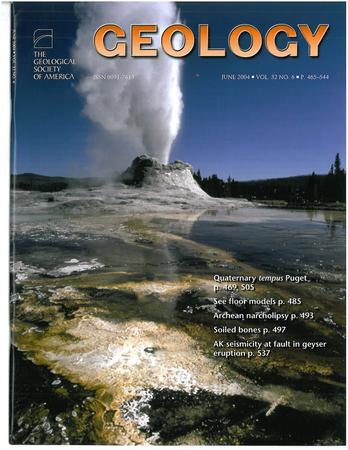Tonian true polar wander events recorded by paleolatitudinal variations of South China and its Southern Hemispheric position in Rodinia
IF 4.6
1区 地球科学
Q1 GEOLOGY
引用次数: 0
Abstract
Tonian true polar wander (TPW) events, first reported from South China (SC), were later confirmed by a paleomagnetic study of Svalbard. However, recent studies have argued that the dispersion of the Tonian paleomagnetic poles in SC may instead have resulted from remagnetization, local rotation, or inclination shallowing. We conducted a detailed paleomagnetic study on the ca. 792 Ma Kaijianqiao Formation in SC. Demagnetization and rock magnetic experiments revealed a primary remanence carried by detrital hematite, which recorded seven geomagnetic polarity reversals. We reviewed the Tonian poles from SC and found that all have various positive field tests, which argue against remagnetization being the cause of their dispersion. Additionally, statistical tests suggest that inclination shallowing has had a minimal influence on these poles. The paleolatitudinal variation of SC during ca. 805−780 Ma demonstrates three stages of fast motion; although they exceed the speed of plate tectonics, they are consistent with the previously proposed TPW event in the late Tonian. Therefore, we explain the dispersion of the 810−750 Ma poles in SC by a combination of TPW and vertical-axis rotation. By comparing the paleolatitudinal variations of SC predicted by seven reconstruction models of Rodinia, we propose that SC was in the Southern Hemisphere during the late Tonian and located on the southern or western periphery of Rodinia.华南古纬度变化及其在罗迪尼亚的南半球位置记录的Tonian真极漂移事件
托尼真极漂移(TPW)事件最早报道于中国南方,后来被斯瓦尔巴群岛的古地磁研究证实。然而,最近的研究认为,SC中托尼古磁极的分散可能是由再磁化、局部旋转或倾角变浅造成的。本文对南关县约792年马开桥组进行了详细的古地磁研究,退磁和岩石磁学实验表明,赤铁矿碎屑携带的原生剩余物记录了7次地磁极性逆转。我们回顾了SC的托尼亚极,发现它们都有各种积极的场测试,这表明再磁化不是它们分散的原因。此外,统计试验表明,倾角变浅对这些极点的影响极小。805 ~ 780 Ma的古纬度变化表现为三个快速运动阶段;虽然超过了板块构造运动的速度,但与前人提出的晚托尼世TPW事件一致。因此,我们通过TPW和垂直轴旋转的组合来解释SC中810 - 750 Ma极的色散。通过比较罗迪尼亚7个重建模型预测的SC古纬度变化,我们认为SC在晚东世时期位于南半球,位于罗迪尼亚的南部或西部边缘。
本文章由计算机程序翻译,如有差异,请以英文原文为准。
求助全文
约1分钟内获得全文
求助全文
来源期刊

Geology
地学-地质学
CiteScore
10.00
自引率
3.40%
发文量
228
审稿时长
6.2 months
期刊介绍:
Published since 1973, Geology features rapid publication of about 23 refereed short (four-page) papers each month. Articles cover all earth-science disciplines and include new investigations and provocative topics. Professional geologists and university-level students in the earth sciences use this widely read journal to keep up with scientific research trends. The online forum section facilitates author-reader dialog. Includes color and occasional large-format illustrations on oversized loose inserts.
 求助内容:
求助内容: 应助结果提醒方式:
应助结果提醒方式:


